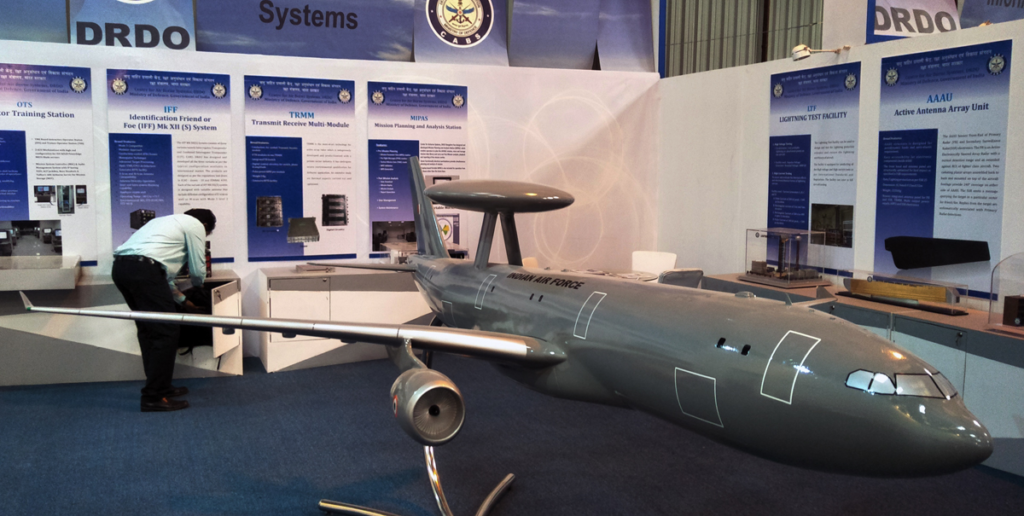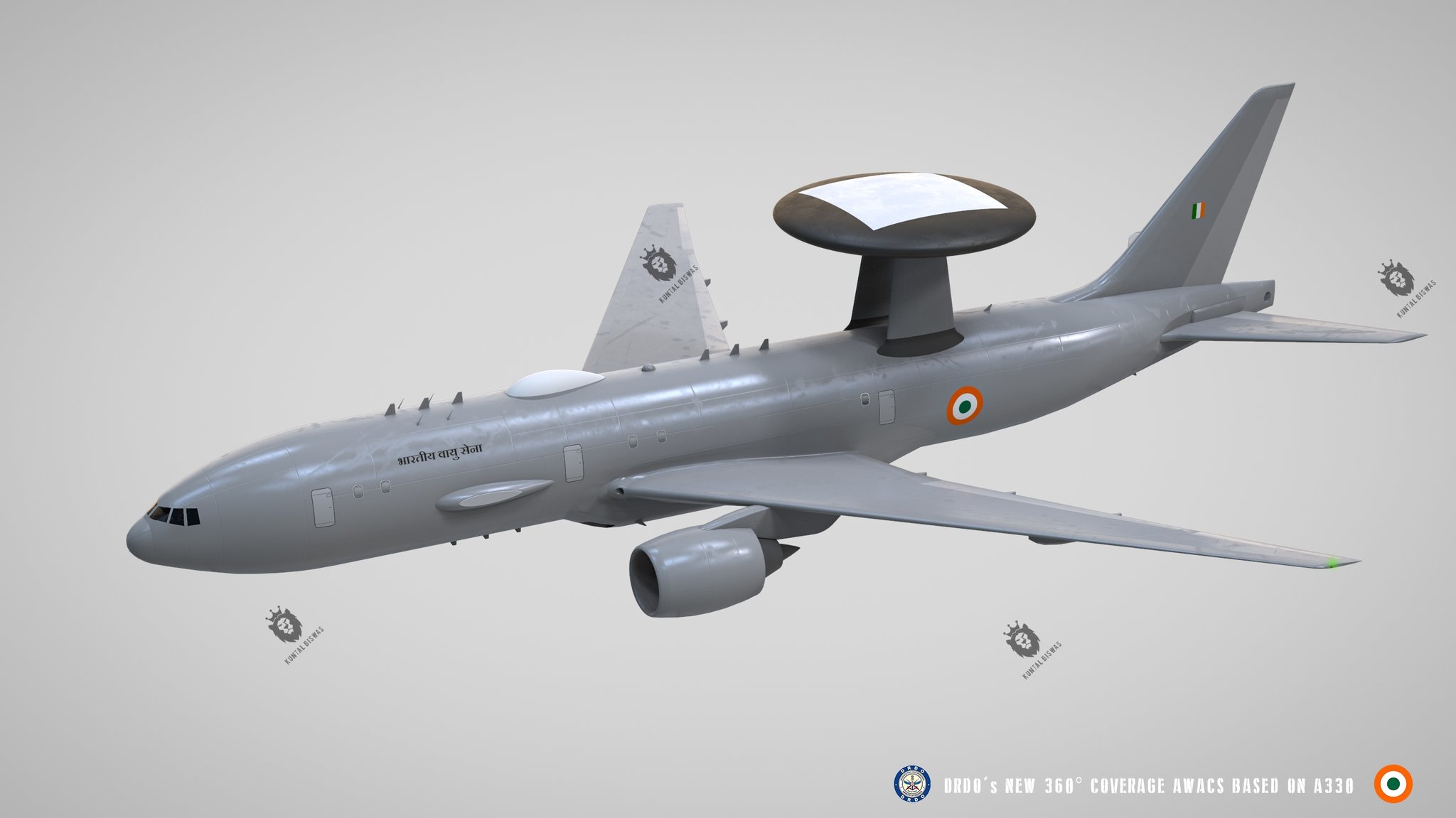The Ministry of Defence (MoD), Government of India, has released an official Request for Information (RFI) indicating its intention to procure six Airborne Early Warning and Control (AEW&C) systems, along with associated ground segments, from registered Indian vendors. This initiative is aligned with India’s goal of enhancing its air defense and surveillance capabilities, contributing to a robust, state-of-the-art Command and Control (C2) network that can respond effectively to evolving threats.
Timeline for Delivery and Local Content
The AEW&C systems will be delivered as per mutually agreed timelines, with the Ministry expecting the completion of delivery within 36 to 60 months following the signing of the contract. Notably, the procurement does not mandate the system to be entirely indigenous. Vendors are encouraged to propose the procurement category as per Chapter 2 of the Defence Acquisition Procedure (DAP) 2020, including tentative Indian Content (IC), allowing flexibility for homegrown, imported, or assembled systems under the ‘Make in India’ initiative.

Platform Configuration and Performance Requirements
The MoD’s detailed technical specifications require the AEW&C to be based on a customized jet aircraft with payload integration, ensuring it meets the operational needs of the Indian Air Force (IAF). The platform must feature advanced avionics and IT systems, with specific performance capabilities including:
- Endurance: Minimum of 8 hours of operational time.
- Air-Air Refueling and Fuel Dumping: The aircraft must be capable of in-flight refueling and safe fuel disposal.
- Altitude: An operational ceiling of 40,000 feet or higher.
- Cruise Speed: Must exceed Mach 0.7.
- Takeoff and Landing: The aircraft must be able to operate from airfields at elevations up to 1660 meters Above Mean Sea Level (AMSL) with runway lengths no greater than 9,000 feet.
Just for the reference, The endurance of A320 is about 5–6 hours on one load of fuel. So, IAF is looking for a base platform in a notch higher category.

Primary Radar Capabilities
The AEW&C will be equipped with a multi-mode, solid-state, 4D Active Electronically Scanned Array (AESA) radar. This radar must feature:
- 360-degree coverage: Essential for monitoring airspace in all directions.
- Detection and Tracking: Capable of identifying a range of targets from large-bodied aircraft to low radar cross-section (RCS) targets such as UAVs and helicopters.
- Operational Modes: Should include normal search, long-range/extended range (ER) modes, sea surveillance, Ground Moving Target Indicator (GMTI), and hypersonic modes.
- Detection Ranges: At least 400 km in normal mode and up to 550 km in ER mode, with a minimum sea surface range of 425 km.
Netra is a 3D radar and IAF is looking for a Next generation Radar in this case.

Secondary Radar Requirements
The secondary radar system will include a solid-state phased array monopulse Identification Friend or Foe (IFF) system with a range of at least 500 km. This system must be compliant with the Mk-XII (S) standard and offer 360-degree coverage, operating in various modes to ensure comprehensive target identification.

Operator Workstations and Mission Suite
The aircraft will house at least 12 operator workstations capable of supporting mission commanders and operators in real-time data processing, target identification, and change detection. The mission suite will integrate onboard sensors (radar, IFF, ESM, and CSM) with data from other aircraft for seamless network-centric operations, offering real-time communication with the IAF’s C2 network via a secure data link system.

Electronic Warfare (EW) and Self-Protection Suite
To ensure survivability in hostile environments, the AEW&C will be equipped with an Electronic Support Measures (ESM) system providing 360-degree azimuth coverage, and advanced self-protection suites including Radar Warning Receivers (RWR), Missile Approach Warning Systems (MAWS), and Countermeasure Dispenser Systems (CMDS) for dispensing chaff and flares. Additionally, the system must support integration of indigenous technology, including crypto modules and indigenous RWR.
Ground Exploitation and Data Link Systems
The Ground Exploitation Station (GES) must offer capabilities for real-time communication with the airborne AEW&C system, ensuring seamless data transfer via both Line-of-Sight (LOS) and Beyond-Line-of-Sight (BLOS) methods, including SATCOM. The system should be able to process and store large amounts of mission data, with workstations mirroring those aboard the AEW&C platform.
Training, Maintenance, and Certification
The MoD has outlined rigorous training requirements for air and ground crews, with mission planning and simulator systems to replicate real-world scenarios. Vendors must also provide a comprehensive maintenance infrastructure and life cycle support plan to ensure the AEW&C systems remain operational for up to 20 years.
Conclusion
The procurement of six AEW&C systems will significantly enhance India’s aerial surveillance capabilities, improving national defense readiness. The flexibility provided in terms of Indian Content and procurement categories allows for a mix of indigenous and imported technologies, supporting India’s push towards self-reliance in defense manufacturing under the ‘Make in India’ initiative. Vendors are invited to submit their proposals in compliance with the outlined technical and operational parameters, with an emphasis on advanced radar technology, electronic warfare capabilities, and robust communication systems.
Note : CGI are done by Kuntal Biswas

Just select the Israeli radar and save us all the trouble of going through a tendering process if the Netra is not being upgraded to the required new specs.